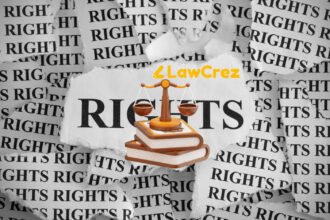Introduction
The Kesavananda Bharati case (1973) stands as one of the most influential judgments in Indian constitutional law. The case established the Basic Structure Doctrine, a principle that prevents Parliament from altering the fundamental features of the Constitution. Decided by a 13-judge bench, the largest ever in the history of the Supreme Court of India, it continues to shape the limits of constitutional amendment powers to this day.
Background of the Case
In the late 1960s and early 1970s, the Indian Parliament frequently used its powers under Article 368 to amend the Constitution—particularly to advance socialistic reforms like land redistribution. These amendments often clashed with the Fundamental Rights of citizens, especially the Right to Property (Article 19(1)(f) and Article 31).
Swami Kesavananda Bharati, the head of the Edneer Mutt in Kerala, filed a petition challenging the Kerala Land Reforms Act, 1963, arguing that it violated his property rights and, by extension, the sanctity of the Constitution.
Key Facts
- Petitioner: Swami Kesavananda Bharati
- Respondent: State of Kerala
- Bench: 13 judges (largest ever in Indian judicial history)
- Judgment Date: 24 April 1973
- Citations: AIR 1973 SC 1461; (1973) 4 SCC 225
- Constitutional Provisions Involved: Articles 13, 19, 31, and 368
The case came after conflicting decisions in earlier rulings —
- Shankari Prasad v. Union of India (1951) and Sajjan Singh v. State of Rajasthan (1965) upheld Parliament’s power to amend any part of the Constitution.
- Golak Nath v. State of Punjab (1967), however, held that Parliament could not amend Fundamental Rights.
Kesavananda Bharati thus aimed to settle this constitutional conflict once and for all.
Legal Issues Involved
- Does Parliament have unlimited power to amend the Constitution under Article 368?
- Can Parliament amend Fundamental Rights?
- Is there any inherent limitation on the amending power?
Arguments Presented
Petitioner’s Arguments
- The Constitution is supreme, and Parliament is only a creature of the Constitution.
- Unlimited power to amend would allow Parliament to destroy the Constitution’s very identity.
- Fundamental Rights form the core of democracy and liberty, and cannot be abrogated.
Respondent’s Arguments (State of Kerala)
- Parliament’s amending power under Article 368 is absolute and unlimited.
- The term “amendment” includes addition, variation, or repeal of any constitutional provision.
- The will of the people, expressed through Parliament, should not be judicially restricted.
Judgment and Reasoning – Kesavananda Bharati Case
The Kesavananda Bharati case resulted in a 7–6 majority decision, a narrow but historic verdict. The Supreme Court ruled that:
Parliament has wide but not unlimited power to amend the Constitution. It cannot alter the “basic structure” or essential features of the Constitution.
Key Principles Established
- The Basic Structure Doctrine was introduced, stating that certain fundamental features cannot be amended or destroyed.
- The Constitution is supreme, not Parliament.
- Judicial review is an essential part of the basic structure.
- Elements like separation of powers, secularism, democracy, and rule of law are beyond amendment.
This doctrine became a permanent safeguard against potential misuse of political power.
Basic Structure Doctrine: Components Identified
The Court did not exhaustively list all elements of the basic structure, but later judgments clarified several, including:
- Supremacy of the Constitution
- Rule of Law
- Separation of Powers
- Judicial Review
- Federal Character of the Constitution
- Secularism
- Parliamentary Democracy
- Fundamental Rights
Impact and Significance
The Kesavananda Bharati case transformed Indian constitutional jurisprudence. It:
- Balanced constitutional flexibility with institutional stability.
- Protected citizens from arbitrary amendments threatening democracy.
- Empowered the judiciary as the ultimate guardian of the Constitution.
Subsequent cases like Indira Nehru Gandhi v. Raj Narain (1975) and Minerva Mills v. Union of India (1980) reaffirmed this doctrine, ensuring that even during political turbulence, the Constitution’s core values remain intact.
Internationally, this case inspired similar doctrines in other jurisdictions, such as Bangladesh and Pakistan, where courts adopted the concept of limiting amendment powers to preserve constitutional identity.
Conclusion
The Kesavananda Bharati case is more than a judgment—it is the constitutional heartbeat of Indian democracy. It draws a line between Parliament’s authority and constitutional sanctity, ensuring that no political majority can rewrite the nation’s foundational principles. For law students and practitioners, it remains an essential study in constitutional law, judicial independence, and the philosophy of limited government.
Also Read
Dispute Resolution Careers Opportunity at A&S Legal, Delhi; Apply Now
Supreme Court Declines Blanket Relief in Bihar SIR Case; Directs Legal Aid for Excluded Voters







